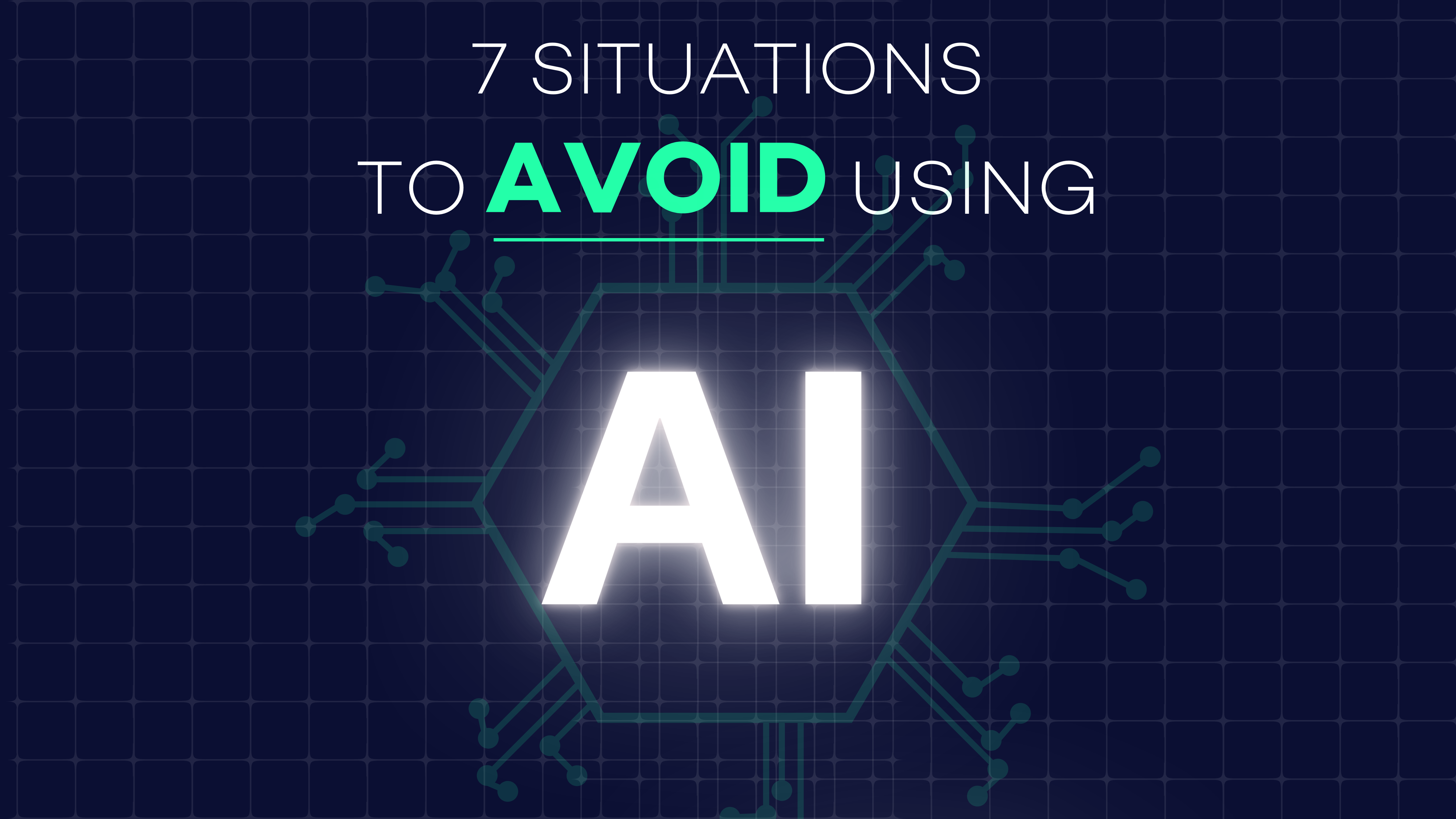As we stand on the cusp of a technological revolution, Generative AI (GenAI) promises to reshape how organisations engage with technology, positioned by Forrester in 2023 as the fulcrum of future business growth. Despite its transformative potential, there exist scenarios where the use of AI might not yield the desired results and could potentially lead to adverse consequences. The risks encompass issues such as data loss, reputational damage, and non-compliance with regulatory requirements.
In this blog post, we delve into seven critical situations where caution is paramount when deploying GenAI and Large Language Models (LLMs). These examples serve as a guide, prompting a thoughtful exploration of various factors that may impact the effectiveness of GenAI and LLMs in specific contexts. It is crucial to recognise that while there will always be an output, evaluating whether the output justifies the investment of input efforts is essential. If the answer is affirmative, judiciously deploying these tools aligned with business objectives is recommended.
The 7 Situations to Avoid Using GenAI
- 1. Lack of Data
- 2. Using Private Data
- 3. Highly Proprietary and Variable
- 4. Applying Human Review and Training of Responses
- 5. Lack of Outcome
- 6. Super Critical but Vague
- 7. Lack of Time
1. Lack of Data
Where you have a lot of data to either train or pass to the LLM, which incidentally doesn’t necessarily have to be very well structured in the way that a human would need to be able to understand it in this situation, there are great use cases where you can really put the LLM through its paces and get the very best out of them.
However, you need to avoid setting high expectations where you don’t have much data to begin with. It sounds obvious, but I have seen so many people make this assumption. A Large Language Model is just that: it understands language very, very well, be it written in English, French, or German, or be it a software development language or mathematical calculations. However, what it will be able to provide, and the quality of the response very heavily depends on the data and prompts that you can pass to it. Don’t expect an LLM to help much where you can’t enrich the model with additional data, whether via inference tuning or through grounding.
2. Using Private Data
All the well-known LLMs widely available, do not currently provide you with the controls or confidence on where your data will end up. Therefore, using private or sensitive information should be a firm No when it comes to using AI. This is extremely high risk and can have a negative impact on you and your organisation’s reputation.
However, if you are in control of the LLM service that you use and understand entirely where the data that you are submitting is stored and what it is being used for, then there is no reason not to use private data.
Only LLM models that are deployed and contained within the infrastructure that is under your control should be considered appropriate to use, and only then if there are proper technical controls in place.
3. Highly Proprietary and Variable
If you are delving into uncharted territory, working on something that is new to your field or the results anticipated are unusual and diverge from our current social, economic, and societal norms, relying solely on an LLM for tasks beyond formatting and summarising might not yield optimal results. However, this is not to discount its potential to generate intriguing responses worthy of discussion. In this instance, refining the model with your specific data is imperative to achieve results where initial testing may have not met expectations.
4. Applying Human Review and Training of Responses
It is crucial to recognise the immense potential of these systems, poised to revolutionise work processes. Despite this, as of now, these models cannot be used as a fully automated hands-off approach. Human involvement is indispensable both at the initiation and conclusion of the process, providing the input and reviewing the output. Similar to human behaviour, the responses of the same LLM can exhibit variations, sometimes subtle or can be substantial. These fluctuations may arise inexplicably or because the LLM version increments, alterations in training data, or variations in input. ; The complexity of these factors underscores the necessity for well-structured prompt engineering. Regardless, the fundamental point remains: a thorough review is imperative before being sent out. Relate this to the specific context of your role, akin to the review of a team member’s presentation before it reaches an executive audience.
5. Lack of Outcome
The more unclear you are on the outcome you want, the more difficult it will be to give the LLM the supplementary grounding data and instruction it needs to do its job accurately. Similarly to a human, the likelihood of an LLM delivering a satisfactory response improves when provided with in-depth and well-crafted instructions.
6. Super Critical but Vague
When dealing with long-form textual content characterised by vagueness, circumlocution, or excessively neutral sentiments, an LLM will struggle to pick up this subtly within the text. Documents featuring numerous links or external references may also pose challenges in this regard.
If it is necessary to incorporate such documents in your instructions, provide the LLM with an escape clause, for example: “If uncertain, say so, and specify what additional information is required for a more informed response”. While a proficient LLM will adhere to the guidance, it is important to note that it may consistently resort to this approach thereafter. To compound this further, many LLMs tend to summarise out of the box, which can result in critical points, especially those situated at the bottom of a document or within a numbered or bulleted list, being overlooked or overly condensed.
An example of this is if you parsed an 18-point bulleted list from a legal contract; the LLM covered points 1-12 well, but points 13-18 with summarised with a generic “and everything else” statement. While it may seem acceptable, it became problematic when it was evaluated that item 14 was the most important thing on that list to consider! To mitigate these risks, strategic planning and careful prompt engineering is crucial.
7. Lack of Time
To effectively use AI tools, you need to consider the time constraints. Although those models are considered to increase productivity and reduce wasted time, they still require a human to engineer an adequate prompt and to consider the desired outcome. Without the time to conduct this, you might miss out on the art of the possible.
“You get out what you put in” – This summarises why a lack of time can impact the performance of an LLM. If you do not have the time to 1) curate or create a decent data set or 2) engineer a satisfactory prompt to accompany the data about your expectations of the LLM, the received outcome will be of similar quality because you cannot create something out or nothing!
Looking to learn more about AI?
In our latest whitepaper, Nick Francis, CTMO at Brooklyn Solutions, deep dives into the history of AI, and why is now the time to start incorporating it into your strategy. Following on from this discussion of when not to use AI, the whitepaper touches upon the tangible and quantifiable benefits of GenAI in Customer-Supplier Management if used in the right way. To learn more, download our whitepaper for the ultimate GenAI guide.



